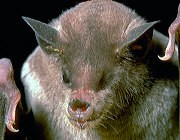 DNA barcoding is a method of identifying to which species an unknown organism belongs. For example, DNA barcoding has been used to determine whether fishmongers and restaurants are really selling the kinds of seafood they claim to have on offer (much of the time they aren't). The technique is quite simple. You sequence a specific section of DNA, most often the mitochondrial cytochrome c oxidase subunit 1 (COX1) gene, and compare what you find with the known COX1 genes of different species. When you get a match, you’ve identified your specimen.
DNA barcoding is a method of identifying to which species an unknown organism belongs. For example, DNA barcoding has been used to determine whether fishmongers and restaurants are really selling the kinds of seafood they claim to have on offer (much of the time they aren't). The technique is quite simple. You sequence a specific section of DNA, most often the mitochondrial cytochrome c oxidase subunit 1 (COX1) gene, and compare what you find with the known COX1 genes of different species. When you get a match, you’ve identified your specimen.Researchers from the Centre of Expertise for Rabies and from the University of Ottawa have used DNA barcoding to label bat species in the hopes of also identifying strains of rabies. In Canada, where this study was conducted, about 80 bats are found to be infected with rabies each year. Thirty species of bat indigenous to the United States and Canada have tested positive for rabies. Needless to say, this can pose a threat to humans, pets, and lifestock.
Using DNA barcoding, the scientists were able to reassign a few bats to their proper species. As most species of bat harbor a unique variant of rabies, understanding to which species a population of bats belongs can help track the rabies virus as well.
Using DNA barcoding, the scientists were able to reassign a few bats to their proper species. As most species of bat harbor a unique variant of rabies, understanding to which species a population of bats belongs can help track the rabies virus as well.
Hat tip: Karen James.
No comments:
Post a Comment